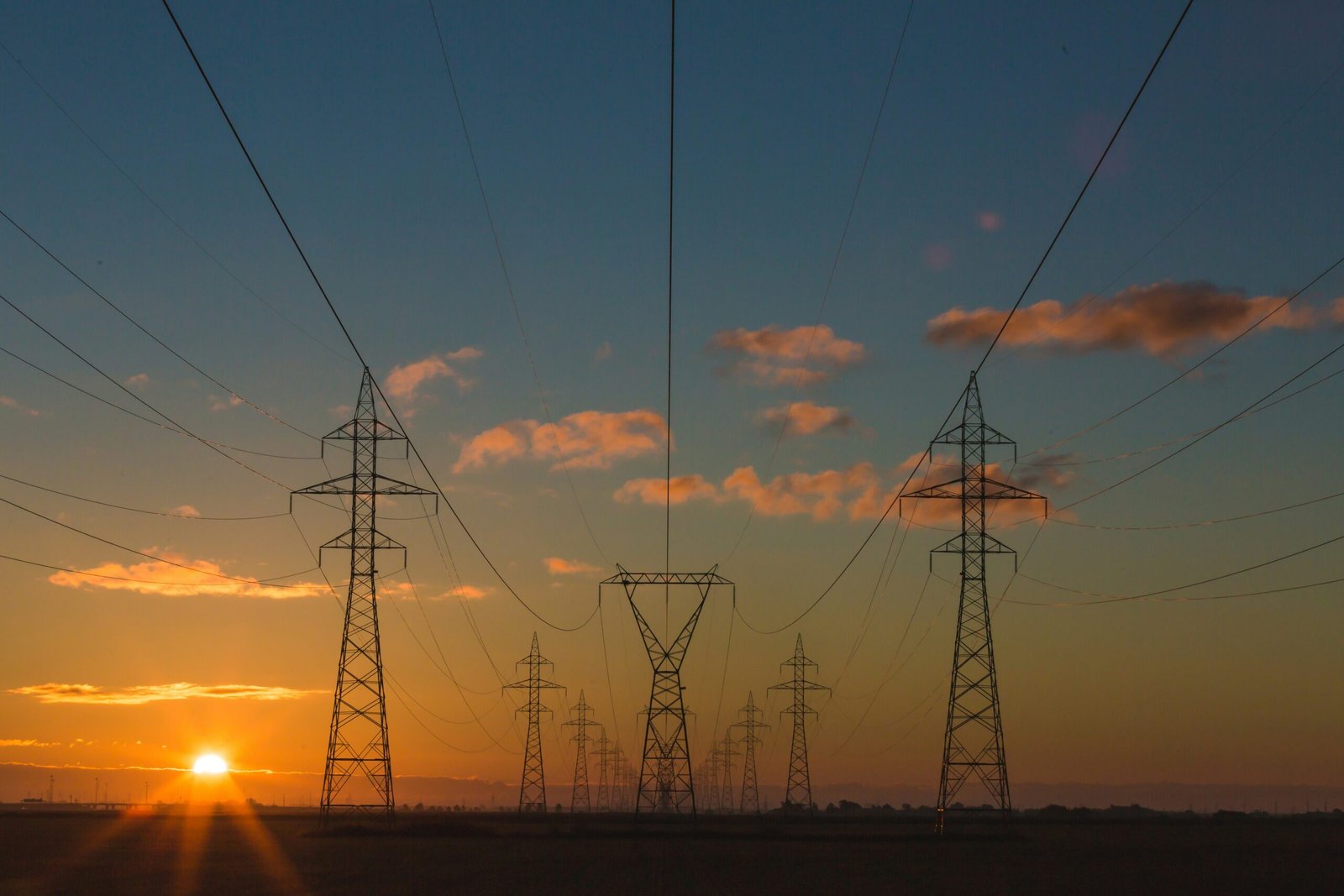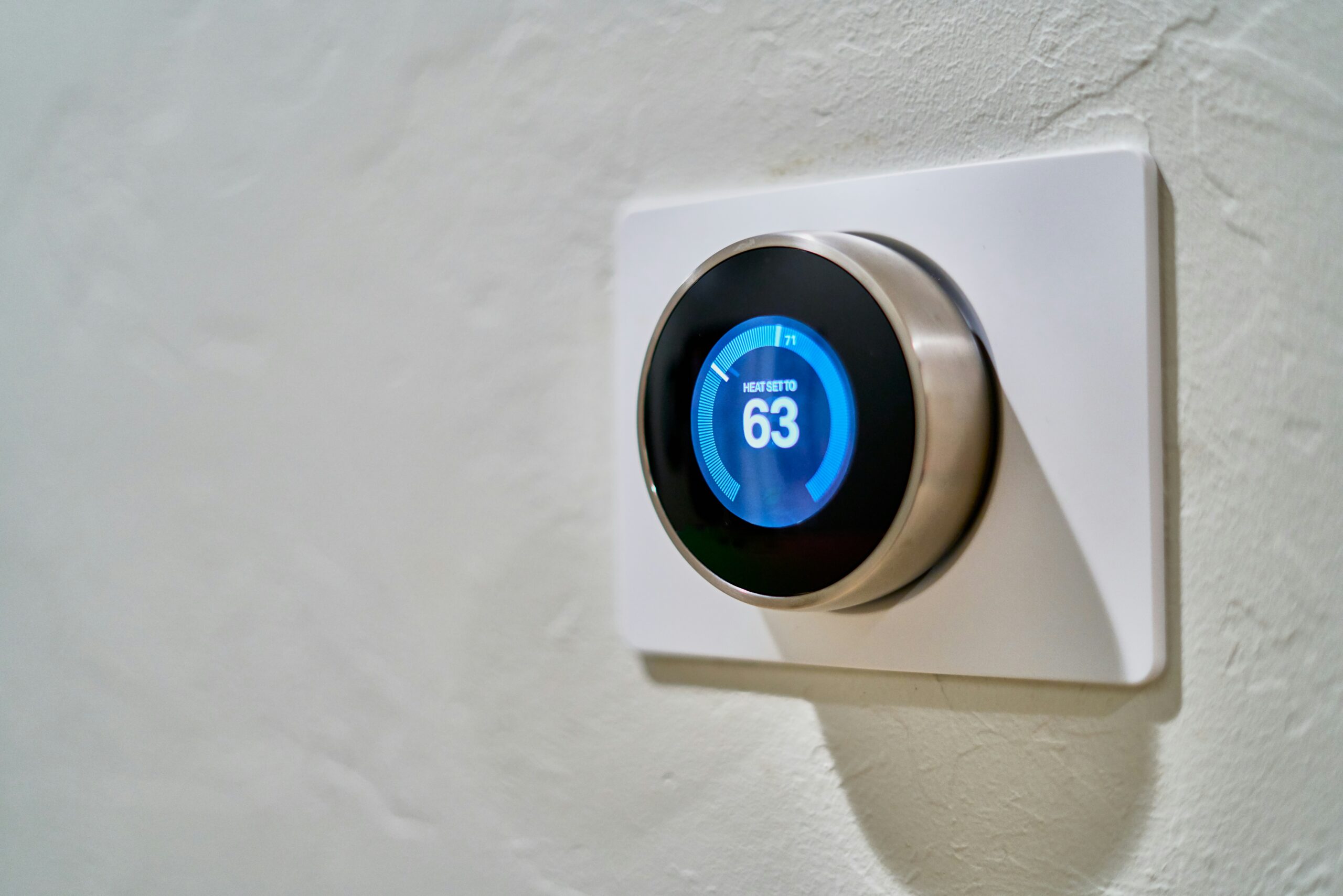
Introduction to Energy Efficiency
Energy efficiency is a pivotal concept in the context of modern households, primarily characterized by the optimal utilization of energy resources, thereby reducing consumption without hindering performance. In an era where environmental conservation holds significant importance, energy-efficient practices are increasingly becoming essential for homeowners. The rising awareness of climate change and the depletion of natural resources has prompted individuals to explore sustainable and green technology as viable solutions for their homes.
The impact of energy consumption on the environment is multifaceted, encompassing not only the direct effects of greenhouse gas emissions but also the broader consequences on resource depletion. Traditional energy sources often contribute to air and water pollution, which poses serious health risks to communities and wildlife. In response, technological advancements have facilitated the development of energy-efficient appliances and devices designed to minimize environmental impact while maximizing functionality. These innovations are designed to achieve the same level of performance as conventional products, yet they significantly reduce power consumption, aligning with the principles of sustainable practices.
Homeowners are now presented with a range of energy-efficient gadgets that leverage cutting-edge technology to promote a greener lifestyle. These devices not only alleviate the burden of high energy bills but also contribute to a larger collective effort to reduce carbon footprints. By incorporating sustainable and green technology into their homes, individuals can participate in the global initiative to combat climate change. Thus, understanding energy efficiency becomes essential, as it empowers homeowners to make informed choices that enhance their living environments while also benefiting the planet.
Smart Thermostats: Regulating Your Home’s Temperature
Smart thermostats are a remarkable advancement in sustainable and green technology, reshaping how homeowners manage heating and cooling systems. These devices are designed to learn your daily schedule, adjusting the home’s temperature accordingly. By utilizing advanced sensors and algorithms, they can optimize the environmental conditions in real-time, ensuring energy conservation without compromising comfort.
One of the primary benefits of smart thermostats is their ability to reduce energy consumption. Traditional thermostats often leave homeowners manually adjusting settings, which can lead to wasted energy when buildings are unoccupied or during sleep hours. However, smart thermostats can automatically alter temperatures when no one is home or during the night, resulting in substantial energy savings over time. Studies have shown that integrating a smart thermostat can lead to energy savings of up to 30 percent, translating to significant cost reductions on utility bills.
Moreover, the remote control feature enables users to manage their home’s heating and cooling from their smartphones or tablets. This means homeowners can make adjustments while away from home, ensuring their living spaces are comfortable upon arrival. Additionally, many models feature integration with other smart home devices, contributing further to the efficiency of an entire home ecosystem.
Among the best models available on the market, the Nest Learning Thermostat and the Ecobee SmartThermostat are recognized for their user-friendly interfaces and intelligent features. They are designed not only to provide comfort but also to support a more sustainable lifestyle by reducing energy usage. As homeowners increasingly adopt the principles of sustainable living, smart thermostats represent a tangible step toward achieving a more energy-efficient home.
LED Lighting: Brightening Up Your Home Efficiently
LED lighting represents a significant advancement in sustainable and green technology, providing homeowners with energy-efficient alternatives to traditional incandescent bulbs. These light-emitting diodes consume considerably less energy—up to 80% less—yet produce the same amount of brightness. This remarkable efficiency makes LED lights an excellent choice for environmentally conscious consumers looking to reduce their energy consumption.
One of the key advantages of LED lighting is its longevity. While incandescent bulbs typically last around 1,000 hours, LED bulbs can operate for over 25,000 hours. This extended lifespan greatly reduces the frequency of replacements, not only contributing to sustainability efforts but also decreasing the cost and waste associated with discarded lighting. LED technology, therefore, aligns well with broader goals of resource conservation and environmental responsibility.
LED lights come in various forms, including bulbs, strip lights, and recessed lighting, making them suitable for multiple applications around the home. Whether illuminating living spaces, enhancing outdoor areas, or providing task lighting in kitchens and offices, LED fixtures can be seamlessly integrated into any design scheme. Their versatility is further enhanced by the availability of adjustable color temperatures, allowing homeowners to select warm or cool tones according to their preferences and requirements.
The financial advantages of LED lighting are significant as well. Switching to LED bulbs can lead to substantial savings on electricity bills over time. Given their lower power consumption and long lifespan, homeowners can expect to recoup their initial investment through reduced energy costs within a relatively short period. Additionally, many utility companies offer rebates or incentives for adopting LED technology, further enhancing its appeal.
Overall, LED lighting exemplifies the principles of sustainable and green technology. By choosing LED lights, homeowners not only contribute to a more sustainable future but also enjoy immediate economic benefits and enhanced home lighting quality.
Energy Star Appliances: Smart Choices for Your Kitchen
Choosing Energy Star appliances is a significant step towards promoting sustainable and green technology in the home. The Energy Star label indicates that an appliance meets strict energy efficiency guidelines set by the U.S. Environmental Protection Agency. These appliances offer not just environmental benefits but also substantial cost savings for homeowners. For example, Energy Star-certified refrigerators use about 15% less energy than non-certified models, translating into lower electricity bills and reduced carbon footprints.
When selecting kitchen appliances, homeowners should consider models such as energy-efficient dishwashers. An Energy Star dishwasher can consume approximately 12% less energy and 30% less water than standard units, making it a viable choice for water conservation. By opting for these types of appliances, consumers contribute to overall energy reduction, promoting a lifestyle that is in harmony with eco-friendly practices.
Washing machines are another critical appliance where advanced energy efficiency plays a pivotal role. Energy Star washing machines utilize around 25% less energy and 33% less water than traditional models. This not only minimizes the resource consumption but also enhances the longevity of plumbing systems by reducing wear and tear. Such appliances allow families to efficiently manage their laundry while adhering to sustainable living principles.
Investing in Energy Star appliances reflects a commitment to sustainable and green technology, ensuring that consumers make informed and responsible choices. As we continue to rely on modern conveniences, it is paramount that these technologies contribute to energy conservation and environmental stewardship. The initial investment in higher quality appliances can lead to significant savings over time, thereby creating a win-win situation for both the homeowner and the environment in the long run.
Smart Plugs: The Power of Control
Smart plugs are innovative devices designed to enhance home energy efficiency by providing users with greater control over their appliances. These plugs, which connect to the home’s wireless network, enable users to monitor and manage their energy consumption remotely through mobile apps. One of the key benefits of smart plugs is the ability to turn devices on and off from anywhere, making it easier to ensure that energy is not wasted on appliances that are left running unnecessarily.
Furthermore, smart plugs often come equipped with scheduling features, allowing users to set specific times for their appliances to operate. For instance, a user can program a coffee maker to start brewing in the morning shortly before they wake up, thereby reducing energy use during peak demand hours. This kind of automation exemplifies the principles behind sustainable and green technology, as it encourages more disciplined energy consumption habits.
Additionally, many smart plugs include functionality for monitoring energy usage, providing users with insights into how much power each appliance is consuming over time. This data can be invaluable in identifying energy-hungry devices and making informed decisions about replacements or adjustments. By utilizing this information, consumers can work toward reducing their overall carbon footprint and embracing more sustainable living practices. The adoption of smart plugs represents a growing trend in energy-efficient home technology, illustrating the pivotal role of smart devices in achieving environmental sustainability goals.
In conclusion, smart plugs offer a practical solution for those looking to optimize their energy consumption at home. By integrating these devices into daily routines, users can not only contribute to a more sustainable lifestyle but also enjoy the added convenience of managing their home appliances with ease. The utilization of smart plugs plays a significant role in the shift towards smarter and greener household technology.
Energy-Efficient Window Treatments: Blocking Out Waste
In the realm of sustainable and green technology, energy-efficient window treatments represent a significant advancement in enhancing home insulation and reducing energy consumption. These treatments, such as thermal curtains and window films, serve to maintain indoor temperatures, thereby minimizing the reliance on heating and cooling systems. By strategically blocking heat loss during winter or preventing excessive heat gain during summer, homeowners can effectively lower their energy bills and reduce their carbon footprint.
Thermal curtains, designed with insulating materials, create a barrier against outdoor temperatures. When drawn, they trap air within the folds, providing an added layer of insulation. This is particularly beneficial during colder months, as it helps to keep warm air inside, decreasing the need for heating. Similarly, during warmer months, thermal curtains can be drawn to prevent external heat from entering the home. This dual functionality ensures that living spaces remain comfortable year-round, contributing to energy conservation.
Another valuable solution is window films, which can be easily applied to existing glass. These films reflect solar energy, thereby reducing heat transfer. They are available in various tints, providing options for those who seek to maintain outdoor views while effectively managing glare and heat. Additionally, window films enhance privacy without compromising natural light. By adopting these energy-efficient window treatments, homeowners not only improve their comfort but also take significant steps towards adopting sustainable living practices.
Ultimately, the implementation of energy-efficient window treatments is a cost-effective strategy that promotes energy conservation in the home. By integrating these solutions, individuals can enjoy a more temperate living environment while aligning with principles of green technology. This shift not only conserves energy but also endorses a sustainable future for generations to come.
Solar Chargers: Powering Up Sustainably
As the movement towards sustainable and green technology continues to grow, solar chargers have emerged as a pivotal innovation in the field of energy-efficient gadgets. These devices harness solar energy, converting sunlight into electricity that can be used to charge various electronic devices. By reducing reliance on grid electricity, solar chargers not only offer a sustainable energy solution but also promote environmentally friendly practices in daily life.
There are several types of solar chargers available on the market today, each tailored to specific applications and user needs. Portable solar chargers are among the most popular, particularly for outdoor enthusiasts and travelers. These lightweight devices typically feature multiple solar panels that enable them to convert sunlight efficiently, allowing users to charge smartphones, tablets, and other portable electronics while on the go.
Another type of solar charger is the solar power bank, which combines the charging capabilities of portable solar chargers with the storage capacity of traditional power banks. This allows users to harness solar energy during the day and store it for later use, making it especially convenient in situations where access to electricity is limited. Some solar power banks come equipped with features such as waterproof casing and rugged designs, making them ideal for adventurous users.
Additionally, there are solar chargers designed for home use, capable of charging larger devices such as laptops or powering small appliances. These systems may require a more substantial installation effort, often integrating with home solar panel setups or being part of larger solar energy solutions. By utilizing solar energy for charging, homeowners can significantly decrease their energy bills while contributing to a more sustainable future.
In conclusion, solar chargers represent a remarkable advancement in sustainable and green technology, showing considerable potential for everyday application. As consumers increasingly seek ways to reduce their carbon footprint and harness renewable energy sources, solar chargers will undoubtedly play an essential role in promoting energy-efficient lifestyles.
Home Energy Monitors: Tracking Consumption
In the pursuit of sustainable and green technology, home energy monitors have emerged as essential tools for tracking energy consumption within residential settings. These devices provide homeowners with real-time insights into their energy usage, enabling them to identify and assess patterns that contribute to their overall energy consumption. By monitoring the various devices and systems within a household, energy monitors help to pinpoint areas of high energy use, such as heating and cooling systems, appliances, and lighting.
The core function of home energy monitors lies in their ability to accurately measure the electricity consumed by individual circuits or entire homes. Many modern monitors offer user-friendly interfaces and intuitive mobile applications, which allow homeowners to review their energy data conveniently. This information is invaluable for promoting energy efficiency as it empowers users to make informed decisions regarding their lifestyle choices and household habits. For example, if a homeowner notices that a particular appliance is consistently consuming more energy than expected, they may choose to replace it with a more energy-efficient model or adjust their usage patterns.
Moreover, these devices often provide historical data analysis, allowing users to see fluctuations in energy usage over time. This analysis can be crucial in understanding the impact of seasonal changes or the implementation of energy-saving measures. By integrating home energy monitors into their daily routines, homeowners can contribute to a broader movement toward sustainable practices in energy consumption. Ultimately, the insights garnered from these monitors can significantly aid in reducing a household’s energy footprint, supporting both environmental goals and potential cost savings on utility bills.
Conclusion: The Future of Energy Efficiency in Tech
As we move towards an increasingly digital world, the adoption of energy-efficient tech gadgets has become paramount. Integrating these innovations into our homes offers more than just a method for cutting down on energy bills; it represents a significant step toward a sustainable future. Energy-efficient devices, often referred to as green technology, provide the dual benefit of economic savings alongside environmental preservation. By utilizing smart thermostats, LED lighting, and energy-efficient appliances, households can considerably reduce their energy consumption.
The impact of incorporating such sustainable technology cannot be understated. Every small change made—be it switching to a smart plug or opting for energy-efficient kitchen appliances—contributes to a larger movement aimed at reducing carbon footprints. This not only aligns with personal financial goals but also plays a role in combating climate change. The beauty of green technology lies in its ability to create a lasting effect, promoting sustainability not just within individual households but also extending its advantages to the broader community. This in turn fosters a culture that values efficiency and conservation.
Adopting energy-efficient tech gadgets is more than a trend; it is a crucial strategy for navigating the challenges of resource depletion and environmental degradation. Consumers are encouraged to consider these technologies not only for their immediate benefits but also for their potential to create a cleaner, healthier living space. As technology continues to evolve, the development of even more sophisticated and efficient devices is imminent, paving the way for a future that prioritizes both efficiency and sustainability. By choosing energy-efficient solutions today, we can contribute to a greener tomorrow.

